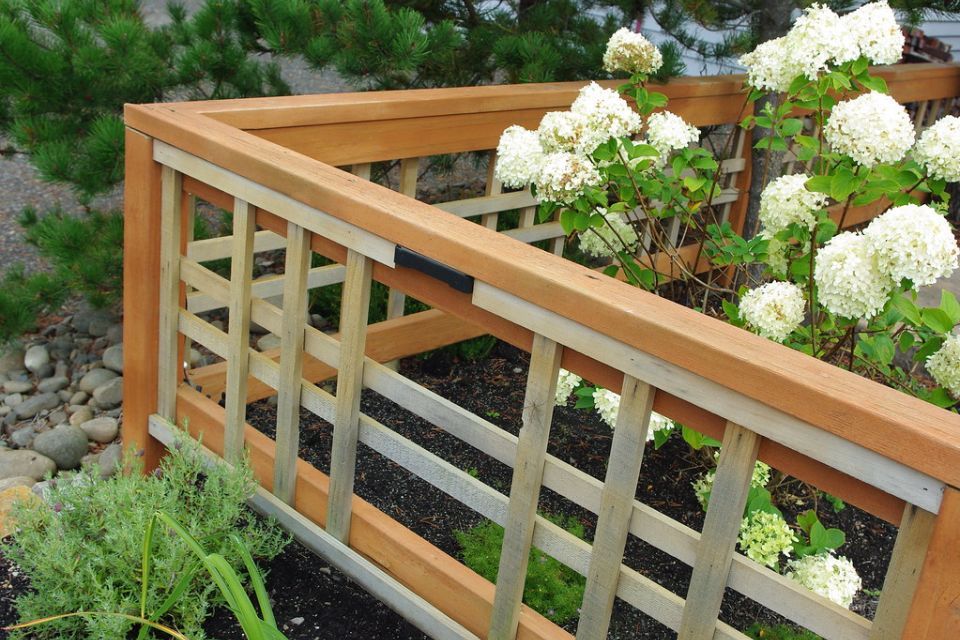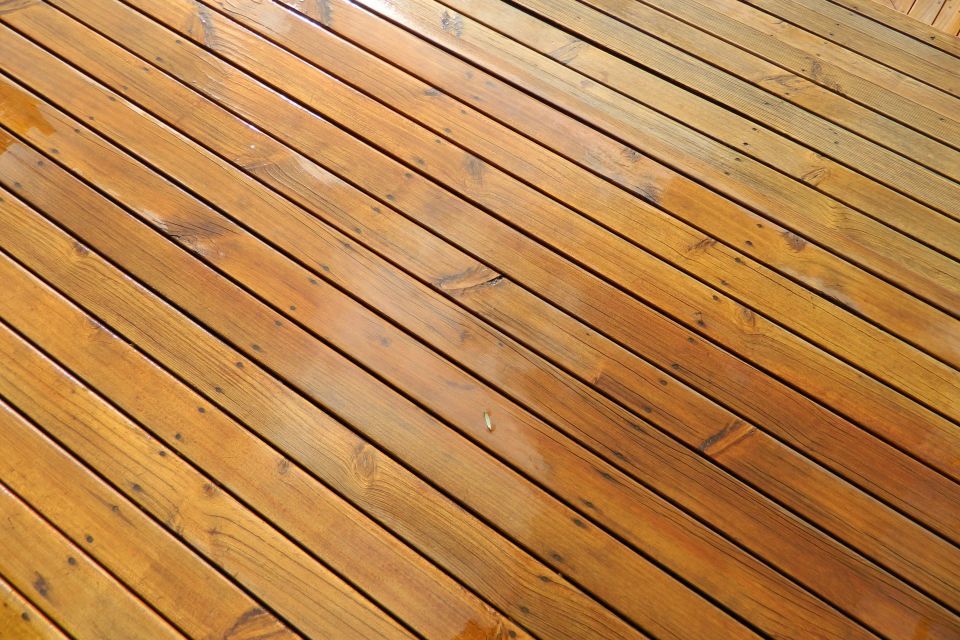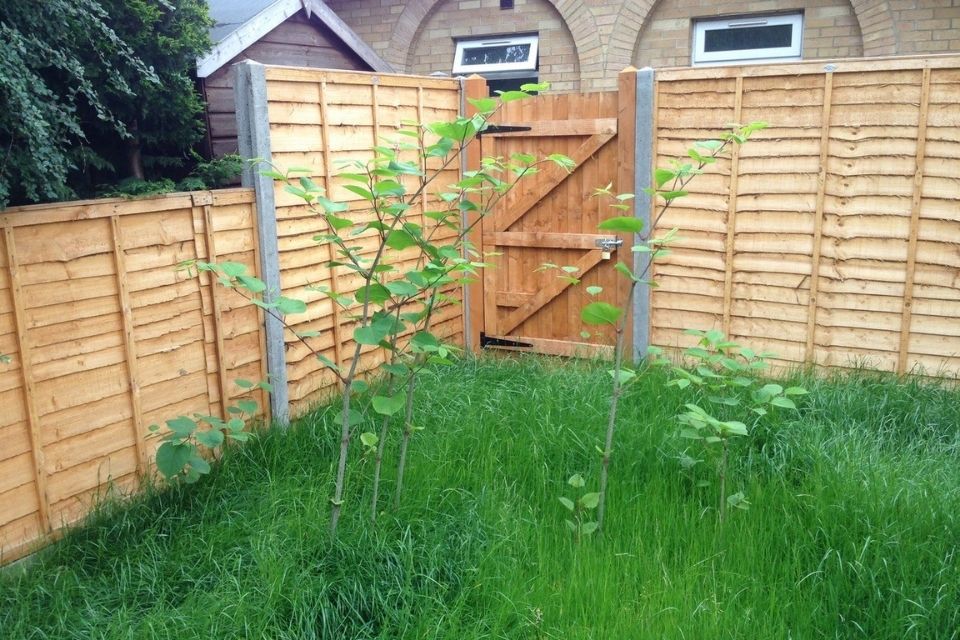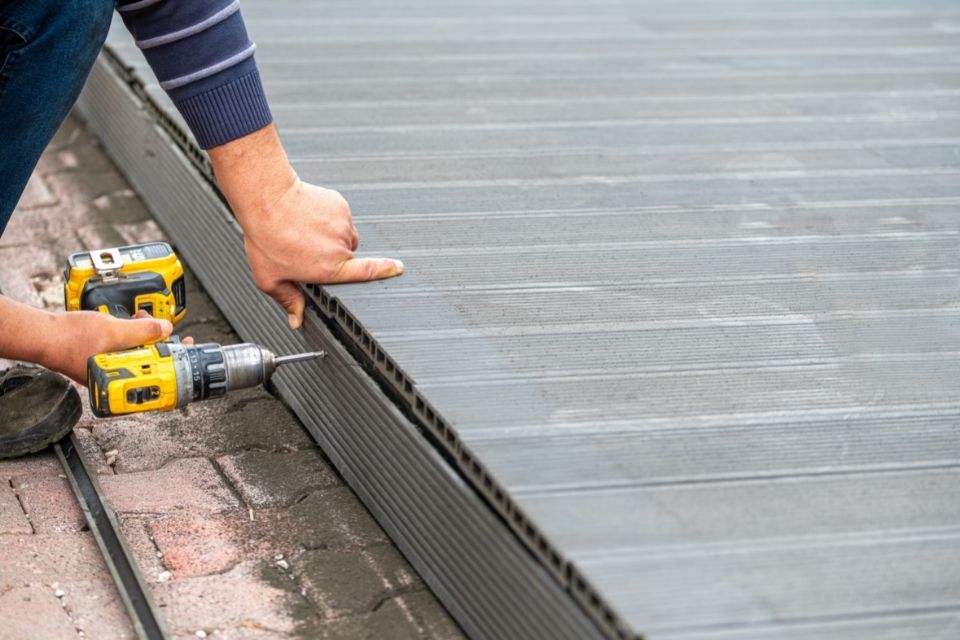How Much Does Professional Grass Cutting Cost?
Mowing services are generally priced by the hour, whether they are part of a package of other gardening work or the gardener comes in once a week just to cut the grass. Here we will go through the different costs for a professional to cut your grass.

Many people do not have time to cut the grass every week, and it can be challenging to spot the right weather opportunity if they are working full-time.
The cost of lawn mowing varies by region. Local gardeners may charge as little as £15 - £20 for lawn mowing services, but if you live in London, expect to pay more.
A good lawn mowing price guide considers factors such as size and number. Some may charge by the square metre, with the average charge beginning at £10 - £15 for every 100 square metres. This won't amount to much depending on the time of year.
Assume you use a lawn mowing service during the summer. To keep your lawn looking neat, mow it every two weeks. A fortnightly lawn mowing service should cost between £25 and £30.
When colder weather arrives, your grass will not grow as quickly. You can cut your mowing frequency down to once every four to five weeks. This means that you will pay less for gardening services.
If your garden is big that it can fit four cars, it's time to start looking at big garden prices. If you're lucky to have a garden large enough to accommodate six or more cars, your lawn care costs could total £115 - £150.
Expect your costs to rise if you've allowed your grass to grow wild for whatever reason. Strimming for overgrown grass may cost between £30 and £45. Small grass could cost between £300 and £350 to cut, large grass could cost between £350 and £400, and a very large garden could cost between £400 and £710.
Although prices rise in proportion to the size of your garden, you may benefit financially in certain circumstances. For example, if you're trying to sell your home, having a well-kept lawn increases its kerb appeal.
Grass Cutting Prices
The table below will break down the cutting grass prices:
| Job | Cost of cutting Grass |
|---|---|
| Local gardeners | £15 - £20 |
| Every 100 square metres | £10 - £15 |
| Fortnightly lawn mowing service | £25 - £30 |
| Large garden (6 or more cars) | £115 - £150 |
| Strimming for overgrown grass | £30 - £35 |
| Small grass | £300 and £350 |
| Large grass | £350 - £400 |
| Very large grass | £400 - £710 |
- How Much Does Professional Grass Cutting Cost?
- Why You Should Hire a Professional to Cut Your Grass
- DIY vs Professional Grass Cutting
- What are the Supply Costs for Grass Cutting?
- What are the Additional Costs of Cutting Grass?
- Tradesmen Costs for Grass Cutting
- How Long Does It Take to Cut Grass?
- Types of Grass Cutting
- FAQs
- Sources
Why You Should Hire a Professional to Cut Your Grass
Cutting your grass is one of the most critical and time-consuming tasks for any homeowner during the spring and early summer, and grass growth can proceed well into the autumn and early winter months if temperatures remain mild, as they have in recent years.
For some, mowing the lawn is a constant chore when they want to focus on other factors of gardening or simply sit back and enjoy the garden on weekends without feeling obligated to work in it.
During the growing season, a gardener or gardening business can come in on a regular basis to cut the grass as well as perform other gardening tasks as needed, leaving you free to enjoy the garden once you have free time with family or friends.
They can also help with other lawn-related tasks such as edging, scarifying, feeding and weeding.
Most people assume that when they hire someone to professionally cut their grass, they are paying for their time. Although this is correct, you are also paying for the materials that your professional has brought to the job.
Furthermore, if you are self-employed or work from home, the hours you save by hiring someone to cut your grass will be reinvested in your business. In these cases, the cost of lawn care effectively pays for itself.
DIY vs Professional Grass Cutting
There are benefits and drawbacks to cutting a lawn yourself or hiring a professional. The decision often depends on your budget, time, tools and expectations for your garden's appearance. Let us explain the pros and cons of each:
DIY Grass Cutting
Pros:
- Cost-effective due to having no labour costs involved
- Flexibility as you can cut the grass whenever it suits you
- Gives you a sense of accomplishment and control over your garden
Cons:
- Grass cutting is time consuming, especially if you have a large garden
- The initial cost of equipment such as mowers, strimmers & protective gear is high
- You may lack the experience or tools for a professional finish so may not result in the look you were after
Professional Grass Cutting
Pros:
- Trained professionals know how to cut lawns properly so you are guaranteed an expert finish
- Hiring a professional saves time. Ideal for busy households or those with limited mobility
- Gardeners will have access to commercial-grade equipment and expertise
Cons:
- Professionals come with higher ongoing costs as labour and call-out fees apply
- Less flexible as it is dependent on contractor schedules and their availability
Which Option Is Best?
If you enjoy being hands-on in the garden and already own the necessary equipment, DIY grass cutting can be rewarding. However, if you're short on time or want a high-end finish, hiring a professional could be well worth the investment. Especially for larger or more complex gardens.
In many cases, homeowners choose a mix of both. Doing regular light mowing themselves and bringing in a professional for seasonal treatments edging, or heavy-duty work such as re-landscaping.
What are the Supply Costs for Grass Cutting?
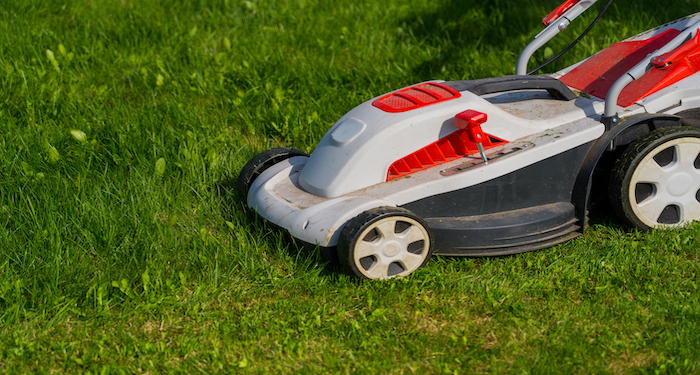
If you want to start your own grass cutting business or have better maintenance on your own grass here, you will find out how much you will need for materials!
Self-employed gardeners may charge less than those who run large corporations. This is since the following costs do not accumulate as quickly:
- Insurance for businesses
- Upkeep of vehicles
- Employee responsibilities
- Advertising
- Uniforms for employees
Hiring somebody who works alone will not imply that you will get less value for your money. They may, however, lack backup resources. Employees, for example, may cover for them if they are ill. Or, if theirs breaks, an additional grass cutting machine.
You don't need a ride-on to run a profitable business. Unless it is going to be used every day, it will cost you a lot in valuation and storage. Privately owned houses with small and medium-sized lawns are by far the most popular market for grass cutting services.
These gardens can take anywhere from a few minutes to several hours to complete. Begin with these and only spend on a ride-on if it will make you money. Depending on the type, a lawnmower can cost between £200 and £800.
From the start, you'll need a strimmer to cut the edges of lawns and a blower to clean up after you've cut the grass. This will cost between £30 and £200.
The strimmer's handle should be looped, and the blower's battery should be housed within the body. You will also require at least one of the largest batteries as well as a fast charger.
The same battery will power both the strimmer as well as the blower, and it should last all day under the conditions described above. All the above will set you back around £500 - £750.
A brush cutter will be required for more difficult clearance work. Choose this from an expert cordless range, and it should operate on the same batteries.
Just make sure to get the best model they make with the cow-horn style handlebars. You could also want to get a harness because hours of clearance can be taxing on your back. Add another £500 - £700 to cover everything.
Don't play with your eyes; a stone in your eye is something you don't want to happen. You should also have several pairs of safety shoes/boots/wellies. Earplugs, a sun hat, sunscreen, long-sleeved shirts, jackets, and hi-vis bibs/jackets are also required.
Don't skimp on any of this; cheap safety gear is uncomfortable and unappealing, whereas high-quality gear feels like a second skin. You could spend anywhere between £100 and £500 on all of this, so choose what works best for you.
The table below will breakdown the supply costs for a professional grass cutting:
| Supply | Cost |
|---|---|
| Lawnmower | £200 - £800 |
| Strimmer | £30 - £200 |
| Strimmer and battery | £500 - £750 |
| Brushcutter | £500 - £700 |
| Protective wear | £100 - £500 |
What are the Additional Costs of Cutting Grass?
When having your professional grass cut, additional costs could add up to increase the overall cost of your garden maintenance. Here we will go through the additional costs so you can try and avoid them to keep your grass cutting at a lower cost.
Garden Renovation
Finding an average cost of renovating a garden is difficult because the overall cost is determined by the size of the garden, the type of renovation desired, and the number of labourers required for the job.
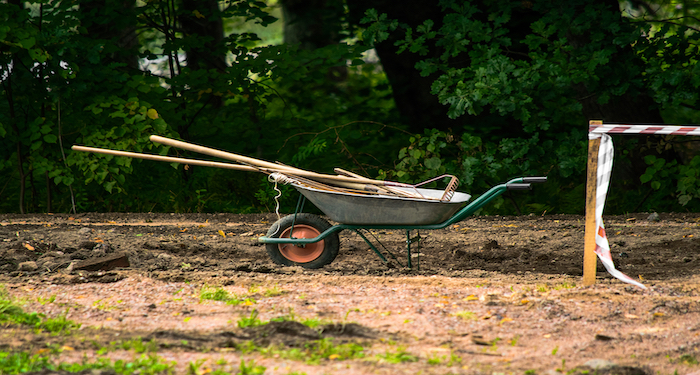
The garden design cost for a transformational project on a big back garden of 100m2 will usually range between £5,000 and £10,000.
Once again, the cost is determined by the materials used, the labour charges, and the time required to complete the job. As a result, if you have a budget, it is probably best to see just how much you have or the work you can get done for the price.
Lawns and plants, for example, can make a huge difference if done correctly. A 50m2 lawn costs around £700 - £900 in supplies and installation, or about £14 per m2. The turf itself costs around £20 per m2 and can be laid yourself to save money.
Planting a few small trees around the garden will provide a nice frame for it and will cost you nothing. Ornamental cherry trees, when in bloom, cost less than £50 per m2 and make an excellent decorative feature.
Small changes to your garden will make a big difference in your living space.
If you would like further information, please refer to our guide on the costs of garden renovation.
Designing and Landscaping
Laying Turf costs approximately £150 to £850, decking costs approximately £1000 to £9000, and fencing costs approximately £500 to £1000.
Other landscaping jobs involve laying a patio, which typically costs between £800 and £1000, and pond installation, which typically costs between £500 and £5000.
Landscapers are also skilled at building garden walls, which cost between £920 and £1900, as well as sheds, which cost between £700 and £1000.
If you would like further information, please refer to our guide on the costs of landscaping and design.
Garden Decking
The cost of installing approximately 15m2 of softwood decking will range between £800 and £1200. Hardwood decking installation costs between £1800 and £2200 in the same area, composite wood decking costs between £1400 and £1800, and uPVC decking installation costs between £800 and £1000.
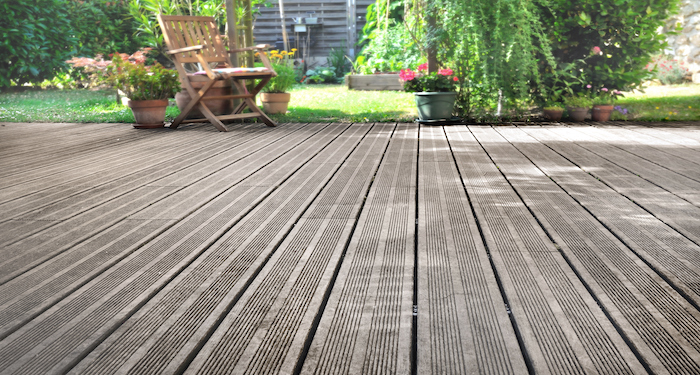
If you would like further information, please refer to our guide on the costs of garden decking.
Garden Waste Removal
Garden waste removal will most likely take 45 minutes and will cost between £100 and £200. The overall cost will be determined by how much garden waste you want to be removed.
It should cost around £80 to £110 to have 300kg (20 bags) of waste removed, while 900kg (60 bags) of garden waste should cost around £200 to £230.
Building a Wall
The average cost of building a wall with conventional bricks is £480 to £1600 for a 1m high x 4m long wall, £750 to £2900 for a 1m high x 8m long wall, and £1020 to £4200 for a 1m high x 12m long wall.
A garden wall made of natural stone would cost around £240 to £520 for a 1m high x 4metres long wall, £830 to £1540 for just a 1m high x 8m long wall, and £1140 to £2160 for a 1m high x 12m long wall.
Hiring a professional to build your garden wall ensures structural integrity, a polished finish and long-term durability that DIY often can’t match.
A 1m x 4m concrete wall would cost around £440 to £640, a 1m high x 8m wall would cost around £670 to £980, and a 1m x 12m long wall would cost around £900 to £1320.
A 1m x 4m long flint wall would cost £680 to £880, a 1m high x 8m long wall would cost £1150 to £1460, and a 1m x 12m long wall would cost £1620 to £2040.
A 1m x 4m sandstone wall would cost £560 to £920, a 1m high x 8m long wall would cost £910 to £1540, and a 1m x 12m wall would cost £1260 to £2160.
If you would like further information, please refer to our guide on the costs of a garden wall.
Location
The first question any new customer will be asked by a mowing contractor is, "Where are you based?" Some tradespeople cover a large area, but many contractors' patch is only a few square miles; effective route planning is the key to a profitable business.
An out-of-the-way, dedicated visit will cost a little more.
Size
The size of the lawn is the next most important thing a contractor will try to determine. Locate your home on Google Maps, then right-click and choose Measure Distance.
Draw a circle around the lawn areas in your garden to calculate the total area. Mention this to your contractor when you call, and they should be able to give you some ballpark figures over the phone.
Grass Situation
Any worker will tell you that the easiest lawn to cut is one that is flat, square, well-kept, and has direct access from a large driveway. The further you stray from this ideal, the more you will have to pay.

Remember that it takes extra time and effort to unload mowers from the street, manoeuvre them up and down steps, and cut around odd shapes, flower beds, trees, and garden furniture, so a small cost may be added to cover this.
Grass Cutting Style
Consider the type of finish you want to achieve, as there are several ways to cut grass depending on what type of lawn you have.
If you want those traditional English stripes, have your contractor use a mower with a rear roller. Stripes enhance the appearance of most lawns, but the ground must be relatively flat – lumps, bumps, and stones put a lot of strain on a roller mower's drivetrain and can cause costly damage.
Your contractor will most likely use a 4-wheel mower in slightly rougher conditions, such as around vegetable patches, roadside verges, or overgrown gardens. These cut just like a rear roller mower, but they don't leave a stripe.
Mulching/recycling grass clippings is a feature on many four-wheel mowers. This option may be less expensive because the contractor will not have to stop and empty the clippings.
Still have a thing for lawn stripes, but the ground is too rough. Don't worry. Just talk to your contractor about what you can do to get it ready for the roller, which can range from garden levelling and top dressing to laying a totally new lawn.
Artificial Grass Installation
There maybe some instances where laying new turf is just not practical. In these instances it maybe worth considering installing artificial grass.
Artificial grass can give a fresh look all year round with minimal maintenance required. There is however a potential higher outlay cost as there are a variety of ground preparation tasks that need to be completed before the grass can be installed.
To give you an idea of cost, A 30m2 artificial grass installation would cost between £1,650 - £1,800. This will depend on the ease of access to the area, the current substrate. There are different grades of artificial grass, so a more premium grass will see a higher price point.
Tradesmen Costs for Grass Cutting
On a hot summer afternoon, most of us enjoy sitting as well as pottering in the garden. However, gardening is a year-round job with many heavy or unpleasant tasks. Many people consider grass cutting to be a weekly summer chore.
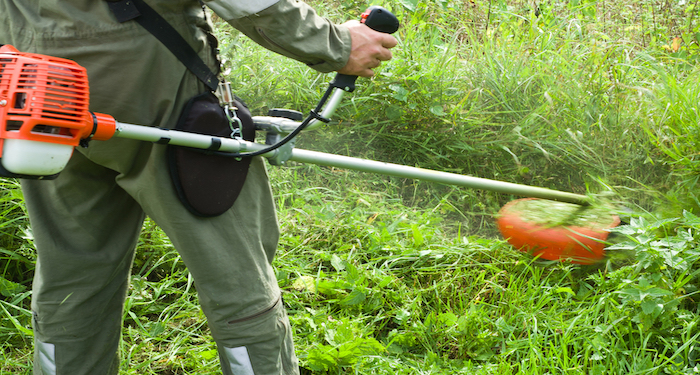
However, many parts of the United Kingdom have such pleasant weather that grass grows eleven months out of the year. So, hire someone to do these tedious, unpleasant tasks, allowing you to sit back and enjoy the garden.
In this section, we will only discuss the labour costs of hiring a gardener to cut your grass!
The hourly rate for a gardener ranges from £12 to £60, with the average cost per hour around £25. As a result, gardeners in the United Kingdom charge between £75 and £400 per day, with an average of around £200.
These gardening quotes may appear to cover a wide range of topics. However, a gardener can have a wide range of skills that you must pay for, such as:
- Grass cutting basics
- The ability to tell the difference between plants and weeds
- Garden design, landscaping, or botanical knowledge that is highly specialised
The going rate for a gardener varies depending on what they have to offer. So, if you want a knowledgeable designer, landscaper, or horticulturist, you'll have to pay top dollar, whereas someone who cuts grass or digs a veggie plot will be much less expensive.
Gardeners are often hired by homeowners for a set number of hours per week or month, depending on the size of their garden and their budget. Weeding, lawn cutting and edging, and pruning are all examples of routine maintenance.
Depending on the type of upkeep, you can expect to pay between £15 and £30 per hour or around £50 for a two-hour session. The actual cost is determined by the number of paid hours and the quality of work.
On large enough jobs, lawn mowing labour necessitates a significant level of preparation, materials, and equipment. The area must be prepared, and certain nearby investments must be safeguarded.
The more complex the grounds, the more difficult the work, especially if it cannot be completed during normal business hours. Given all of this, the average hourly rate for most lawn mowing services will range between £11 and £55 for a two-hour service on a 500 square feet lawn.
The average cost of a lawn mowing service will vary greatly by region. Based on the above estimates, the cost of a lawn mowing service ranges between £0.02 and 0.11 per square foot.
There are various factors that could affect the cost of a gardener cutting your grass. Here we will go through the different factors that will affect the cost.
Season
Spring and autumn are prime gardening seasons because grass, plants, and flowers grow the fastest and require the most care.
Hiring a gardener during the off-season will cost you less than hiring one during the peak season, so keep this in mind before hiring a professional if you want to keep the costs of a gardening service low.
You should keep in mind that some gardeners and landscapers will be able to assist you in creating a winter garden if you want to have a beautiful garden all year.
To help understand what your lawn needs in each season take a look at the table below:
| Season | Months | Recommended Lawn Care Tasks |
|---|---|---|
| Spring | March – May |
|
| Summer | June – August |
|
| Autumn | September – November |
|
| Winter | December – February |
|
Location
The cost of hiring a gardener is heavily influenced by your home's location. Hiring a gardener in London will be significantly more expensive than in the Northern regions of the United Kingdom.
Gardeners in London may charge £5 - £10 more than gardeners in the Northern regions of the UK.
Access
If your garden has areas that are difficult to access but requires the use of heavy machinery or specific tools, the total cost of the job may rise due to the amount of labour and manpower required to reach these areas of your property.
An eligible landscaper or gardener will be able to speak with you about any issues with ease of access that they may encounter.
How Long Does It Take to Cut Grass?
Knowing the duration that it will take to have a tradesperson come in and cut your grass is important as you will know how long you will have tradespeople in your home and estimate how much it will cost in total.

Here we will go through how long it takes to cut the grass so you know what to expect.
Most gardens encountered can be serviced in under an hour. However, mowing is only one aspect of the service. Each visit to a property usually consists of the following:
- The tradesperson driving to your house.
- Unloading, fuelling and preparing the equipment.
- They are striking around the outside.
- Debris is being blown onto the lawns.
- The grass is being cut.
- Taking out the lawnmower box.
- Loading the equipment back into the van.
- A final stomp on the hard surfaces.
- A few minutes were spent talking with a customer.
- Returning from the property.
- Invoicing and collecting payment for the job.
To estimate the hourly rate, you will be charged. You must know how long the tradesperson will be at your property.
Using a strimmer will take longer because trimming around a tree or playhouse may take longer than quickly walking along a straight line.
Ultimately, it comes down to the tradesperson's experience, but it may be helpful to base time estimates on the overall size of your lawn and the complexity of the garden.
Gardens with a lot of beds, statues, garden toys, garden furniture, separate lawns, and so on are all more difficult and take longer to complete.
Therefore, it could include 5 minutes for small new-build lawns, 10 minutes for medium lawns, and at least 15 minutes for lawns larger than 2,000 square metres.
If you need a leaf-clearance job, blasting the debris only on the lawns before mowing takes only a few minutes, but it's probably worth adding 1 minute for small new-build lawns; 2-3 minutes for medium lawns; and at least 5 minutes for lawns larger than 2,000 square metres.
A typical 16"-22" domestic mower can cut around 1,350 square metres in 1 – 2 hours or about 22 square metres in 1.30 – 2 hours.
The table below will break down the duration of cutting grass:
| Job | Cost |
|---|---|
| Strimmer | 5 – 15 minutes extra |
| Leaf clearance | 1 – 5 minutes |
| Medium garden | 1 – 2 hours |
| 22 m2 | 1.30 – 2 hours |
Types of Grass Cutting
There are several different methods for cutting grass. This predominantly depends on the size of the lawn, the condition it is in and how ou would like it to look. Knowing the right way of grass cutting can help achieve a healthy and neat lawn. A professional gardener will be able to evaluate you garden to choose the best option. Below we explain the different types:
1. Cylinder Mowing
Cylinder mowing uses a mower with blades that spin vertically. These cut against a fixed blade, a bit like scissors. This type of mowing is ideal for fine, level lawns and provides a sharp, clean cut finish.
Best for:
- Formal gardens
- Short, well-maintained lawns
2. Rotary Mowing
Rotary mowers have a horizontal blade that spins at high speed to chop the grass. These are the most common type of mowers and are great for uneven surfaces and longer grass.
Best for:
- Medium to large lawns
- Gardens with weeds or rougher grass
3. Strimming
A strimmer uses a nylon line to cut grass. These work well on edges, corners and around obstacles where a mower can’t reach.
Best for:
- Lawn edges
- Around trees, fences and flower beds
4. Mulching Mowers
Mulching mowers finely chop up the grass and distribute it back onto the lawn, working as a natural fertiliser. This saves time on cleanup and can help improve your soil's health.
Best for:
- Eco-conscious gardeners
- Regular lawn maintenance
5. Ride On Mowing
Ride on mowers are designed for cutting large areas of grass. They are often used on garden estates, sports fields and large gardens.
Best for:
- Very large lawns or fields
- Commercial or professional lawn care
Choosing the right grass cutting method will depend on the size of your lawn, the condition of the grass and how manicured you want the final result to be. For the best finish, many gardeners will use a combination of these methods.
FAQs
Q: Can you cut the grass when it's wet?
A: Yes, you can cut grass while it is wet. Moreover, if you cut grass for a living as a part of your lawn mowing business, you should become accustomed to doing so in the rain.
Cutting wet grass, on the other hand, increases the risk of rut damage because the soil is softer and more slippery for mowers, or the grassroots are more easily torn out by the mower tyres.
Q: Should you leave cut grass on the lawn?
A: Grass clippings are a good source of nutrients unless you've allowed the lawn to grow too long or the clippings are in thick clumps. Leaving clippings reduces fertiliser costs and thus protects ground and surface water.
Q: How often should grass be cut?
A: Normally, weekly mowing is the rule, but some lawns require more frequent mowing. Other lawns will grow more slowly and may only require cutting every ten days or two weeks. In general, don't cut more than one-third of a grass blade.
Q: Does cutting grass make it grow quicker?
A: Grass grows faster after being cut short because it is attempting to rebuild itself to its genetic norm. Most turfgrasses benefit from an in-season height of 212 to 3 inches, which is typically the highest setting on mowers.
Q: When should you first mow new grass?
A: Before cutting new grass for the first time, make sure it has reached a height of at least 3 12 inches, if not more. This should take approximately eight weeks, so please be patient! When you are able to cut for the first time, you should use good cutting techniques and mow high.
Q: When can I mow my lawn in the UK (Is there a law)?
A: While there are no national laws in the UK that ban lawn mowing at specific times, local councils may have rules about noise disturbances. This falls under the Environmental Protection Act 1990. These are usually enforced under the category of "nuisance noise."
As a general rule, it’s best to mow:
- Monday to Saturday: Between 8am and 8pm
- Sundays and Bank Holidays: Between 10am and 4pm
Mowing outside these hours, especially early in the morning or late at night, could result in complaints from neighbours.
Always check with your local council for specific guidance and aim to be considerate of nearby residents, especially in shared or terraced spaces.




